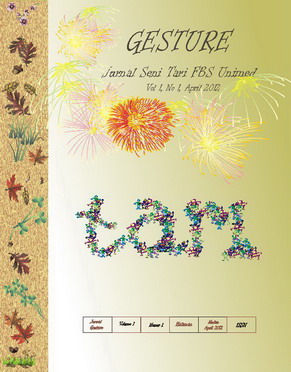UPACARA MANOE PUCOK PADA ACARA SUNAT RASUL DI ACEH BARAT DAYA: TINJAUAN PADATARI HASYEM MEULANGKAH (Mellur Idhayanti)
DOI:
https://doi.org/10.24114/senitari.v1i1.162Keywords:
Upacara Manoe Pucok, Acara Sunat Rasul, Tinjauan TarAbstract
Upacara Manoe Pucok merupakan bagian dari upacara Sunat Rasul dan pesta perkawinan. Melalui Manoe Pucok, diajarkan sopan santun, tata pergaulan serta tata karma.Selain itu makna Manoe Pucok bagi masyarakat Aceh adalah ungkapan yang disimbolkan dalam pembersihan diri sebelum menempuh kehidupan yang baru.Tari Hasyem Meulangkah sebagai bagian dari upacara di atas, sudah ada dan berkembang sejak sebelum Indonesia merdeka. Tari ini ada terutama disaat berlangsungnya perkawinan dan khitanan keluarga para raja-raja. khususnya pada upacara Manoe Pucok yaitu memandikan pengantin yang dilakukan sehari sebelum calon pengantin dipelaminkan dan juga bisa memandikan linto ubit (pengantin kecil yang disunat rasulkan). Kata kunci: Upacara Manoe Pucok, Acara Sunat Rasul, Tinjauan TariDownloads
Published
2012-06-27
Issue
Section
Articles
License
Copyright (c) 2012 Mellur i Idhayant

This work is licensed under a Creative Commons Attribution-ShareAlike 4.0 International License.
Authors published with the Gesture: Jurnal Seni Tari agree to the following terms:
- Authors retain copyright and grant the journal the right of first publication with the work simultaneously licensed under a Creative Commons Attribution License (CC BY-SA 4.0) that allows others to share the work with an acknowledgment of the work's authorship and initial publication in this journal.
- Authors are able to enter into separate, additional contractual arrangements for the non-exclusive distribution of the journal's published version of the work (e.g., post it to an institutional repository or publish it in a book), with an acknowledgment of its initial publication in this journal.
- Authors are permitted and encouraged to post their work online (e.g., in institutional repositories or on their website) prior to and during the submission process, as it can lead to productive exchanges, as well as earlier and greater citation of published work. (See The Effect of Open Access)

